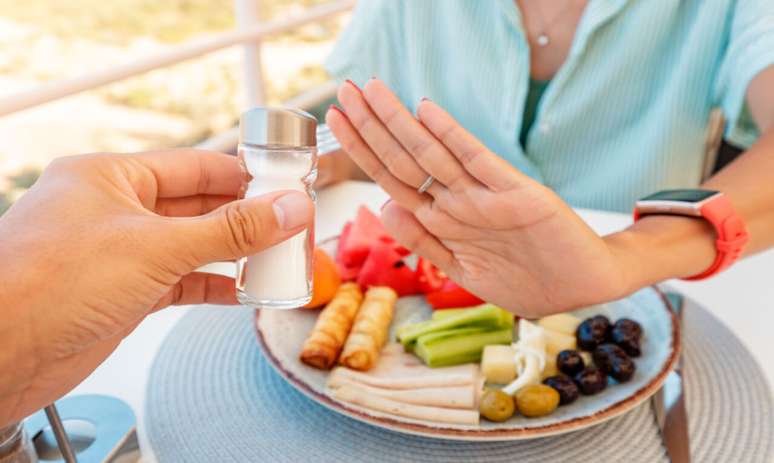Wheat has numerous health benefits, with compounds that aid vision and cardiovascular health.
OR corn It is tasty and very versatile, characteristics that make it the most emblematic ingredient June celebrations (and Giulina). It is everywhere this time of year: roasted over a fire, cooked with butter and salt, in cakes, tamales, couscous, and, with a different name in each region, it is also used in mungunzás, hominy, and curaus. But once the holidays are over, it doesn’t have to go off the menu. The grain is rich in nutrients and can provide health benefits all year round.
According to Lara Natacci, post-doc in food AND mental health for the University of Sao Paulo (USP)An important characteristic of corn is the presence of carotenoids, substances that give foods their orange, yellow and red colors and provide numerous health benefits.
Corn contains mainly two types of this compound: zeaxanthin and lutein. According to the nutritionist, they are important for vision, helping to prevent macular degeneration, a disease that affects the retina and leads to the gradual loss of central vision.
Additionally, carotenoids are converted into vitamin A, which, like vitamin E found in wheat, has an antioxidant effect, protecting against free radicals that cause aging and cell death.
This antioxidant potential is also found in phenolic acids present in foods and is associated with a reduction in the risk of developing diseases such as cancer.
On average, corn is made up of 72% starch, 9.5% protein, 9% fiber and 4% oil, according to nutritionist Maria Cristina Dias Paes, PhD in nutrition and food scientist at Embrace Corn and Sorghum. This composition makes it a healthy source of energy and fiber.
According to nutritionist Durval Ribas Filho, president of the Brazilian Association of Nutrology (Abran), the good amount of fiber present in wheat favors an improvement in intestinal transit, in addition to promoting satiety.
Corn is also rich in complex carbohydrates, characterized by its more elaborate molecular structure. This complexity translates into slower digestion and gradual absorption of glucose into the blood, making it a food with a low risk of contributing to the development of prediabetes and diabetes. This, of course, in recipes without added sugars.
According to Ribas Filho, thanks to its proteins, the consumption of corn combined with legumes, such as beans, lentils, chickpeas and peas, is still able to provide many of the essential amino acids that the human body needs on a daily basis.
It also contains B-complex vitamins and essential fatty acids – organic compounds derived from animal and vegetable fats and oils that are essential for human life and are not produced by our bodies.
Colorful Perks
Corn kernels produced in Brazil are generally yellow or white, but can range in color from black to red.
It is precisely the yellow grains that have the highest concentration of carotenoids. Fortunately, they are widely used in the Brazilian menu. One of the jewels of the Northeast, couscous, for example, is generally prepared with “flocão” produced from the flour obtained by grinding already mature corn. This too – when it is not yet mature and is called “green corn” – is used in sweets, tamales, curau and many other renowned recipes.
Black and red beans contain anthocyanins, pigments that give darker colors to natural foods, such as black and purple skins. In nature, these substances protect foods from the effects of solar rays, since they have a high antioxidant action. In our body, they can help prevent and delay cardiovascular diseases, cancer and neurodegenerative problems.
Studies developed in State University of Campinas (Unicamp) They also showed that purple corn is a good substitute for synthetic dyes. The advantage is that, in addition to promoting the benefits associated with anthocyanins, these natural dyes also do not pollute the environment.
In addition to the difference in color, there are five types of corn, depending on the type of kernel: serrated, hard, floury, popcorn, and sweet. The production of the latter is almost entirely destined for the food canning industry and deserves special attention.
According to Lara Natacci, it has a sweeter flavor, a thinner skin, and is softer. However, you have to be careful because its sugar content is higher. It also has less starch than the others, which makes it unsuitable for recipes such as tamales.
How to consume corn healthily?
To take advantage of the benefits of corn, experts emphasize that the ideal is to consume in nature, cozido or roast. This way, fiber and nutrients are preserved.
Popcorn can also be an interesting snack, especially for its fiber content, as long as you don’t add too much fat or salt. According to Lara, in general, the problem with eating corn and its derivatives is the addition of elements to the grain, such as a lot of butter, salt or sugar.
Cooked corn can also be part of a salad or mixed with rice, adding its benefits to the meal, says Ribas Filho.
Before moving on to the recipes, however, Maria Cristina Paes emphasizes that, when choosing yellow or white corn, it is important to observe whether there are dark kernels on the cob. This characteristic indicates the presence of fungi.
And what about the recipes for the June festivals? Are they harmful?
As for the typical recipes of the June festival, moderation is advised. “It is not forbidden to eat anything. Everything can be part of the diet, as long as there is balance,” says Lara. It is not a problem to eat corn cake or tamales from time to time, but it is important to avoid excess.
For the rest of the year, the secret is to be careful about adding sugar, fat, or salt to the recipe. Avoid overdoing it and be happy.
Source: Terra
Ben Stock is a lifestyle journalist and author at Gossipify. He writes about topics such as health, wellness, travel, food and home decor. He provides practical advice and inspiration to improve well-being, keeps readers up to date with latest lifestyle news and trends, known for his engaging writing style, in-depth analysis and unique perspectives.







-u856n76lmfjq.jpg)
